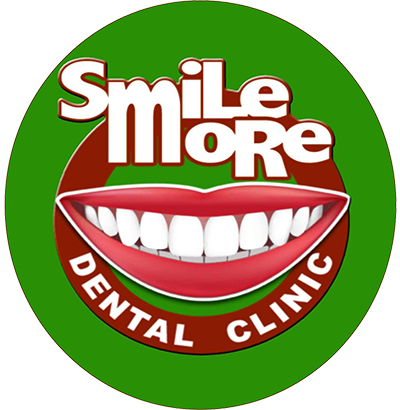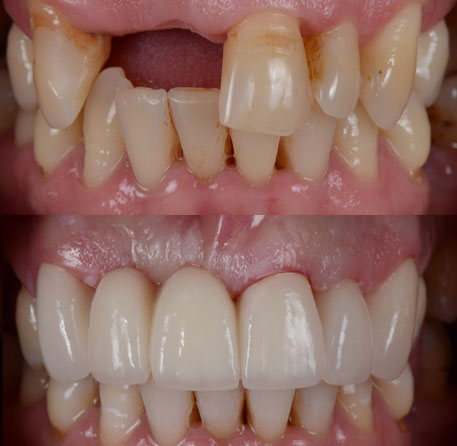Fixed Bridges
A Dental Bridge or commonly called a “Fixed Bridge,” is a custom-made replacement artificial tooth or teeth that fill up space where one or more teeth are missing. They are classified as a Fixed Prosthesis.
Dental Bridges link the gap created by the absence of one or more teeth, especially if you prefer to have the non-removable type of teeth replacement options. Fixed Bridges are consist of two or more dental crowns for the teeth on both sides of the gap. The two or more anchoring teeth are labeled as the “abutment teeth.” And a false tooth or teeth in-between is called the “pontic.” The pontic replaces the missing tooth, held by one or more crowns on both ends. We need to prepare the support teeth to make it possible for a Fixed Bridge to be custom-fitted comfortably.
A special cement (luting cement) secures Fixed Bridges, and only a dentist can remove them. This will give you a comfortable and secure feeling, and they would feel very similar to your natural teeth. In effect, they are firmly fastened, beyond compare to a removable denture.
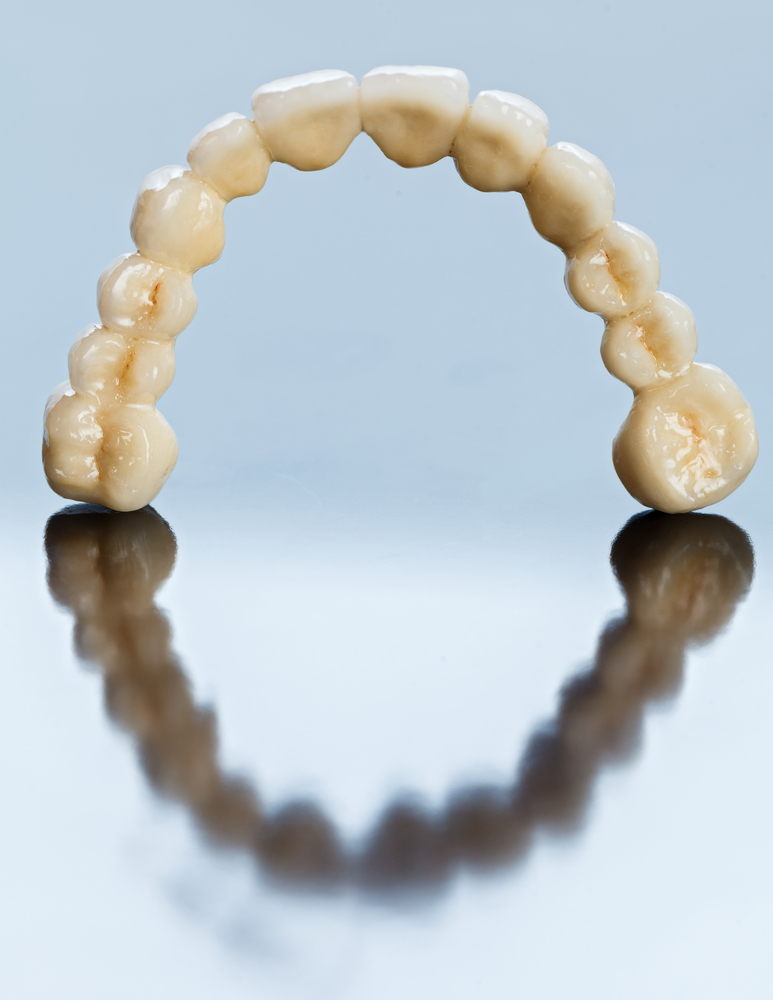
Benefits of Having a Dental Bridge?
- Restores your smile, giving you a complete set of teeth.
- It improves your ability to chew and speak properly, which may have been affected by missing teeth.
- It helps maintain the natural profile and shape of your face.
- Distributes biting forces evenly, allowing for the proper functioning of the replaced teeth.
- It prevents the remaining teeth from shifting or drifting out of their positions.
- Provides stability and support to neighboring teeth.
- It enhances your overall oral health and prevents further dental problems.
- It improves your self-confidence and self-esteem by restoring your dental aesthetics.
- It offers a long-lasting solution for replacing missing teeth.
- Does not require invasive surgical procedures like dental implants.
Why Should You Select a Dental Bridge?
A missing tooth is of paramount concern. Teeth are made to function together to help you chew, speak and smile. When you have one or more teeth removed, the nearby teeth may shift and become crooked. This may make it difficult to talk or chew properly. A lost tooth in the lower jaw may cause a tooth in your upper jaw to move down into that vacant space — meaning your teeth will no longer be even or in a straight line. This can disturb your bite and put more stress on your other teeth and jaw joints, possibly causing damage and pain. Teeth that have drifted or tipped are also harder to clean. This can predispose your tooth decay and gum disease risk or even losing more teeth in the future.
Missing teeth can result in jawbone loss, which can cause adjacent teeth to separate away and lead to facial collapse. If that happens, it may alter the way the jawbone supports the lips and cheeks. Later on, this can make your face look older.
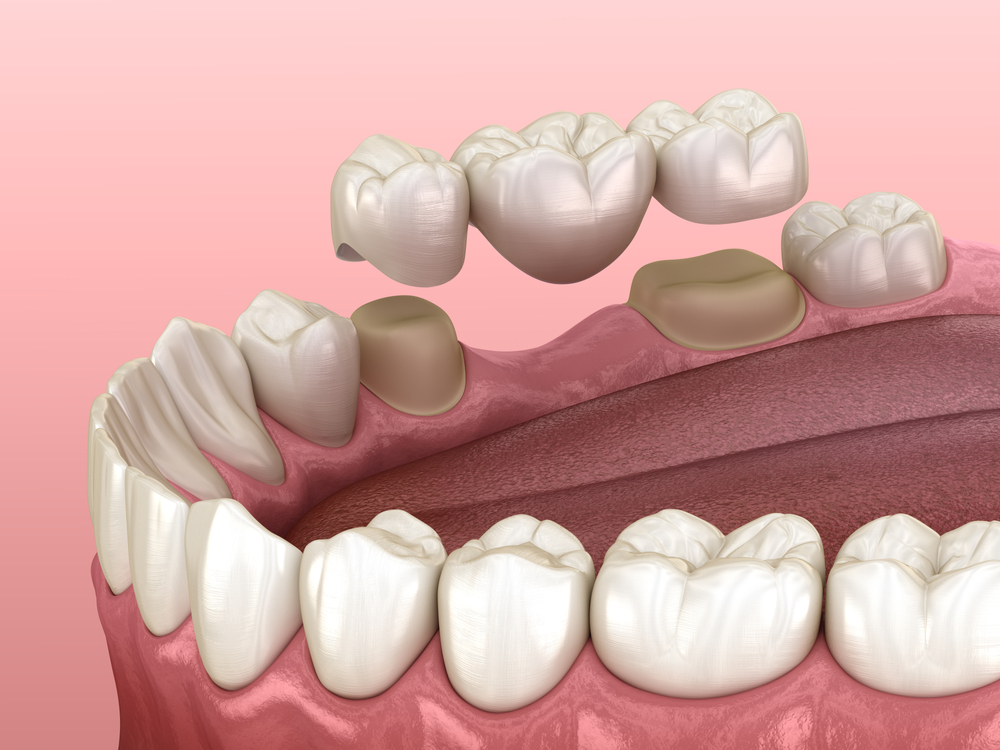
Fixed Bridges are a much better solution to Removable Dentures because they are practically cemented in place. You save from the inconvenience of removing them now and then. By having a Fixed Bridge, you won’t be embarrassed by the occasional slipping of Removable Dentures popping out of position. Since the support teeth are covered with a crown, they won’t be affected by future dental decay, as does removable counterpart. Lastly, they can be made more natural, and we can complete the size and form matching the natural teeth.
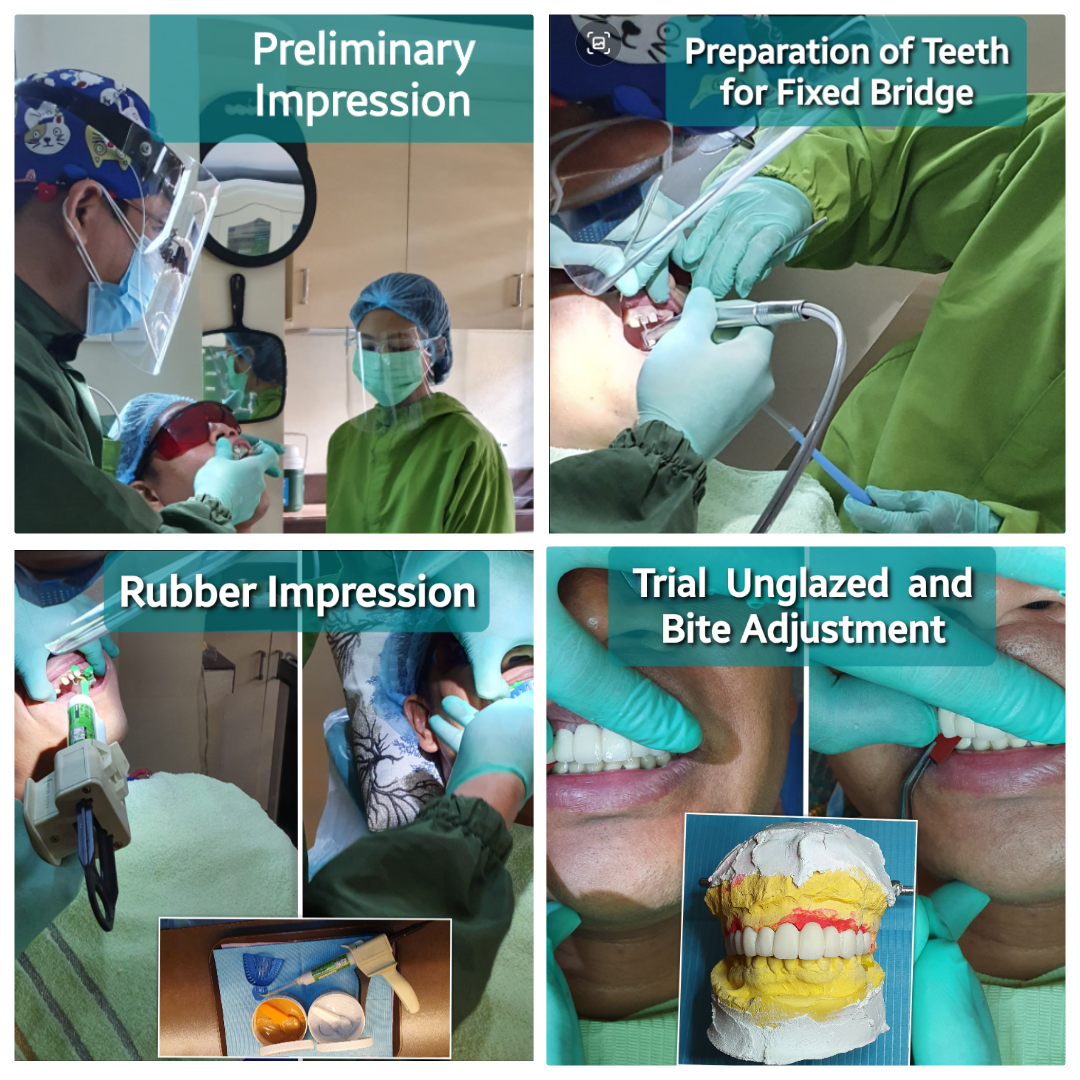
How Do We Do Fixed Bridge at Smile More Dental Clinic, Manila?
Here are the steps involved in getting a fixed bridge at Smile More Dental Clinic in Manila, assuming a Porcelain Fused to Metal type of Dental Bridge. (Although there are similarities with ceramic bridges, the ceramic type tends to be more conservative in preserving the natural tooth structure.)
(1.) Check-up: We examine your existing natural teeth to support the fixed bridge, including the underlying teeth and gum structure. X-rays help us assess the condition.
(2.) Study Cast: We take an impression of your entire teeth to create a “study cast.” This copy will help us plan and design your new fixed bridge.
(3.) Shade selection: We choose a suitable shade that matches your existing teeth for a natural appearance. We consider neighboring teeth for color evenness.
(4.) Numbing: We use local anesthesia to ensure you don’t feel discomfort during the procedure.
(5.) Teeth preparation: We carefully prepare the teeth that will support the bridge. We create enough space for the crown material without damaging neighboring teeth.
(6.) Gingival retraction: We use a string to stop bleeding and ensure accurate recording of all the teeth when taking impressions.
(7.) Final Impression: We take a detailed mold of your teeth using a rubber-like material to ensure an accurate fit for the bridge. We also record your bite using a special wax.
(6.) Temporary bridge: We create a temporary bridge for you to wear until the next visit. It’s made of plastic and allows you to eat comfortably, but please keep in mind that the temporary bridge may not look as natural as the permanent one. Dentists create this as a quick and temporary solution. It may have a less perfect fit and shade, and accidental displacement is possible.
(7.) Dental laboratory: We send your case, including the mold, bite record, and instructions, to a dental laboratory for bridge fabrication.
(8.) Try-in: On your next visit, we remove the temporary bridge and try in the unglazed fixed bridge. We check the bite and shade and make any necessary adjustments based on your feedback.
(9.) Installation: We permanently attach the finished bridge in place using strong dental cement.
Remember, a fixed bridge is a dental restoration that replaces missing teeth with artificial teeth. It helps restore your smile, improve your chewing ability, and maintain the shape of your face.
Are you disgusted or embarrassed by missing teeth? Are you unhappy wearing your loose denture?
Why Choose Smile More Dental Clinic to Do These treatments For You?
Choosing Smile More Dental Clinic for your dental treatments offers several compelling reasons. Here’s why:
(1.) Successful track record: Our clinic has completed numerous successful Fixed Bridge treatments, with satisfied patients attesting to our work’s functional and aesthetic value.
(2.) Expertise and precision: A long-term, well-fitting Fixed Bridge depends on meticulous teeth preparation and correct mechanics. Our experienced dentists possess the necessary expertise to ensure optimal results.
(3.) Quality materials and techniques: We prioritize using high-quality materials and advanced techniques, refusing to compromise on the standards of care. This approach safeguards our patients’ welfare and ensures long-lasting outcomes.
(5.) Dental health matters: When considering your dental health, remember that “the bitterness of poor standard persists long after the sweetness of low price is forgotten,” as Benjamin Franklin wisely stated. While it may be tempting to choose cheaper options, they often come with potential drawbacks, such as compromised quality and future oral health issues.
(6.) Invest wisely: When it comes to Fixed Bridgework, it’s crucial not to commoditize the process by solely comparing costs. Each treatment is a customized work of art; even slight discrepancies in fitting can lead to problems like leaks and fitting issues.
(7.) Transparent and straightforward: We believe in honesty and clear communication. Our dentist in Ermita, Manila, will guide you through the process, ensuring you understand the importance of investing wisely in your teeth and overall health.
By choosing Smile More Dental Clinic, you can have confidence in our seasoned dentists and their ability to provide exceptional treatment tailored to your needs.
Dental treatments, such as Fixed Bridges, demand precision and expertise, making it crucial to rely on a reputable clinic for your dental health needs. We prioritize delivering tailored treatments to ensure your satisfaction and overall well-being.
Types of Fixed Bridges Materials:
1.) Porcelain Fused to Ordinary Metal (PFM) — the cheapest one. Composed of an outer porcelain material with an inner core made of ordinary metal. Gums sometimes react unfavorably to the less pure metal alloy. Regular Metal types are expected to corrode and to be replaced once there is evident receding of gums. For a few years, this type can be used without issue, only if the patient can maintain it properly by good hygiene and home care routine. Its drawback is that they cause the gum line to become darker (grayish effect) due to the inner metal reflection. They are priced per unit or number of teeth or overall teeth included on the dental bridge.
2.) Porcelain Fused to Semi-Precious (Tilite) Metal — the middle category. The price is mid-range. The outer coating is made of porcelain material. The inner metal core is composed of “Tilite” metal, known to be more compatible with gums and human tissues than ordinary metal; thus, safer to use. Tilite also helps eliminate gum disease-causing bacteria by 90%, closer to the natural tooth structure. Considered to be medically pure material, they are durable, resilient to chewing forces, and lightweight. Due to the discussed advantage, they last longer or almost double the longevity period as does ordinary counterpart. Also, they are priced per unit or the number of teeth combined on the dental bridge.
3.) Zirconia Fixed Bridge — This Fixed Bridge material is getting popular from the dental bridges we offer at Smile More Dental Clinic in Ermita Manila. Since Zirconia has NO metal core (inner metal), the translucent (luminous) effect is similar to regular teeth. Zirconia presents a flawless and genuinely natural-looking result! They also provide a better gum reception due to their biocompatibility (gum-friendly). Because they have no metal component, no issues of corrosion can be attributed to them. We always endeavor to offer the newest and unsurpassed quality material to help transform your life for the better, so we highly endorse Zirconia material for crowns and fixed bridges. Though this may seem more costly than the other Fixed Bridges, Zirconia strikes a balance between aesthetics and durable qualities — that will help serve you for a much longer time. If you choose a Zirconia Bridge, you can look forward to many years of confidence when eating, speaking, and smiling. The same applies to the costings: per unit or number of teeth involved for Fixed Bridges.
Important:
Please be informed not to count only the missing number of teeth when implying the total cost for a fixed bridge, regardless of the material you have selected.
Fixed Bridges are priced per number of teeth to be restored, including the support teeth and the missing teeth.
Other parts of the process also require costings, like the x-rays, fillings, build-up material for decayed or damaged teeth, temporaries, and other procedural requirements to come up with the entire costings.
Do not worry since we will discuss the cost of your specific case before we dive into the actual procedure.
